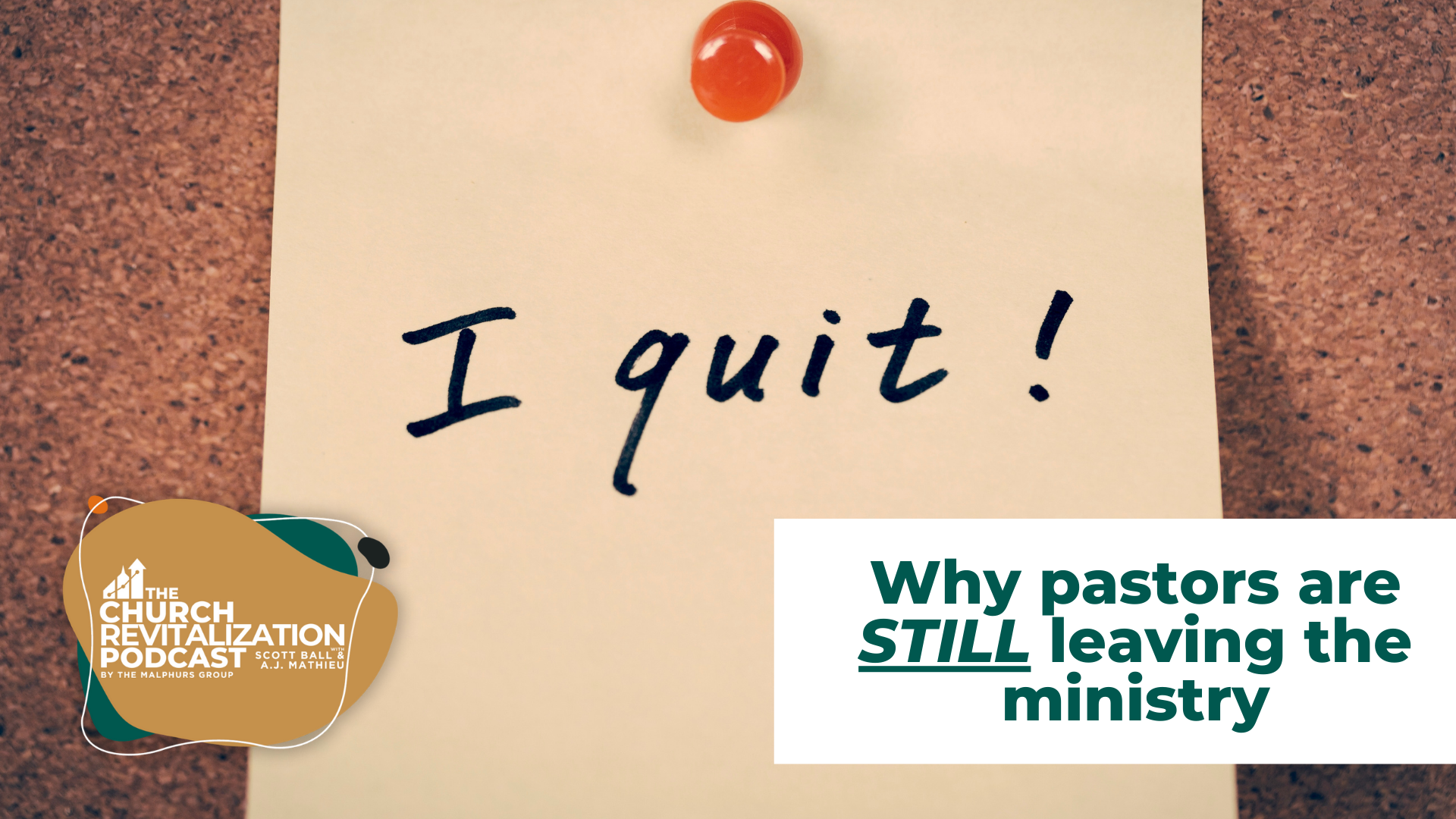In churches across America, a paradox is emerging that’s as perplexing as it is concerning. On one hand, post-pandemic church life is showing signs of financial health and decreased conflict – a beacon of hope suggesting resilience and recovery. Yet, on the other hand, there lurks a shadow over this optimistic landscape: the morale of church leaders is plummeting, painting a picture far more complex than numbers and statistics reveal.
Recent findings from the Hartford Institute for Religion Research paint this dichotomy in stark detail. Three years after the seismic shifts brought about by COVID-19, churches are witnessing an encouraging uptick in giving, with the median donation jumping significantly. Church attendance bounced back from pandemic lows, but as we’ve discussed previously, is still in overall decline compared to pre-pandemic levels. However, engagement in volunteering has nearly fully recovered. This resurgence in resource and engagement, however, masks a less visible but equally critical trend: a growing sense of disillusionment and fatigue among those at the helm – our pastors and church leaders.
The reasons behind this paradox are as multifaceted as they are profound. In this article, we delve into the uncomfortable reality of why, despite apparent prosperity, the spirits of those leading our spiritual communities are waning. We will explore the dissonance between congregational optimism and pastoral morale, the struggles faced behind the pulpit, and hope for a way forward.
This exploration is more than a thought experiment or navel gazing; it’s a call to action. Understanding the roots of this paradox is crucial in forging a path forward – one that not only acknowledges the financial and numerical growth of our churches but also addresses the well-being of those who lead them. Join us as we unravel this complex tapestry, seeking insights and solutions for a phenomenon that is as challenging as it is crucial to the future of our churches.
Reviewing the Key Data
In the post-COVID era, churches are navigating a landscape marked by both promising growth and concerning challenges. The key data reveals a complex story of increased church giving and attendance, juxtaposed with a significant decline in pastor morale. Let’s dive into these statistics to gain a clearer understanding of the current state of our churches.
Attendance and Giving: A Mixed Picture
- Median Attendance: According to the Hartford Institute for Religion Research, the median attendance at local congregations in spring 2023 stood at 60, down slightly from 65 in 2020, indicating a modest decline of about 9%.
- Patterns of Growth and Decline: The report shows a varied landscape: about a third of churches experienced significant decline, a quarter saw some decline, while an encouraging 22% reported significant growth.
- Financial Upswing: Despite these mixed attendance trends, church giving has risen substantially. From 2020 to 2023, the median giving increased by 42%, from $120,000 to $170,000, signifying a notable boost in financial support for churches.
Online Giving’s Impact
- Digital Shift: The rise in church donations has been partly fueled by online giving. Congregations with robust online giving options reported higher per capita giving, with figures reaching as high as $2,428, compared to $1,809 in churches without such options. This trend underscores the growing importance of digital platforms in church finances.
Pastor Morale: A Growing Concern
- Pastor Dissatisfaction: Despite these positive financial and attendance figures, pastor morale tells a different story. A striking number of pastors are contemplating leaving their current church or the ministry altogether. In 2021, 21% of pastors had thought about leaving their church, but by 2023, this number increased to 38%, with 29% thinking about it often.
- Considering Leaving Ministry: The data is even more concerning regarding pastors thinking about leaving the ministry entirely. In 2021, 38% had considered this, but by 2023, only 51% reported having such thoughts, while 34% have considered it often.
These statistics present a paradox in the church world today. On one hand, we see churches adapting and even thriving financially, with new members joining and a successful pivot to digital giving. On the other hand, the people who lead these congregations are facing a deepening crisis of morale, with increasing numbers considering stepping away from their roles or the ministry entirely. This juxtaposition of financial health against pastoral well-being raises important questions about the current state and future direction of church leadership and community support.
The Struggle Behind the Pulpit
While congregations may be experiencing a phase of resurgence and optimism, the story behind the pulpit tells a different tale. Church leaders are grappling with challenges that are often invisible to their congregations.
The Burden of Leadership
Pastors and church leaders are not just spiritual guides; they are administrators, counselors, community leaders, and much more. The pandemic added new dimensions to these roles, from navigating health guidelines to managing the shift to online platforms to balancing a vitriolic political climate. The weight of these responsibilities, coupled with the expectation to be a source of unwavering strength, can be overwhelming.
The transition to digital services and the constant flux of cultural change have demanded rapid adaptability and innovation from church leaders, often without a roadmap or precedent to guide them. Put simply, many pastors are tired.
Emotional and Spiritual Toll
Continuous pressures, both logistical and emotional, can lead to burnout. Pastors are not immune to the psychological toll of guiding a community through crisis, especially when their own support systems may be strained.
Additionally, the role of a church leader can be isolating, with few avenues to express vulnerabilities or seek support. This isolation can be exacerbated in times of crisis when leaders feel the need to present a strong front.
The Pandemic’s Lingering Impact
The pandemic brought about a level of uncertainty that has been challenging for everyone, including church leaders. Making decisions in the face of such uncertainty, particularly those impacting the health and safety of congregations, has been a heavy burden.
The pandemic also accelerated polarization in the United States and other parts of the world. Issues that may have sparked civil debate now spark civil unrest, and a congregation might share many values but could also harbor a degree of polarization. The study referenced at the beginning of this article references that while conflict within the church led to people leaving churches three years ago, it’s less likely to do so now. However, many pastors still have the scars from these conflicts and it compounds the feelings of despair.
The Reality of Contemplating Departure
The data showing an increase in pastors contemplating leaving their positions or the ministry altogether is a stark indicator of the depth of their struggle. This isn’t a mere career change; it’s a profound life decision that speaks volumes about the pressures faced by church leaders.
Factors contributing to these thoughts can include lack of support, feeling undervalued, conflicts within the congregation, and personal health and family considerations.
In understanding the struggles behind the pulpit, it becomes clear that the health of a church is not solely defined by its financial status or attendance figures. The wellbeing of church leaders is equally crucial. This segment of our church community requires support, understanding, and resources to navigate the unique challenges they face. Addressing these needs is not just beneficial but essential for the overall health and future of our churches.
Fostering Pastor Well-Being: Practical Strategies for Enhancing Morale
As we navigate the intricate dynamics of church life in the post-pandemic era, it becomes increasingly clear that the well-being of pastors and church leaders is paramount. While the previous sections have highlighted the challenges, it’s crucial to explore practical tips for improving morale among church leaders. These strategies are not just beneficial but essential in sustaining the spiritual and emotional health of those at the helm of our faith communities.
Building Personal Connections Beyond the Church
Pastors often find themselves engrossed in their church duties, which can lead to a sense of isolation. Encouraging pastors to make friends outside their congregation can provide them with a much-needed outlet for relaxation and candid conversation. These friendships offer a sense of normalcy and a safe space to unwind and be themselves without the weight of their pastoral responsibilities.
Sometimes, an external perspective can be invaluable. Bringing in leadership coaches or mentors from outside the church can provide pastors with new insights, strategies for dealing with stress, and ways to manage their responsibilities more effectively. These experts can also offer guidance on navigating complex situations within the church, providing an unbiased viewpoint that can be refreshing and enlightening.
Take Care of Yourself
The concept of Sabbath is deeply ingrained in our understanding of Scripture, yet pastors often neglect this principle in their lives. It is vital for pastors to take regular breaks, go on vacations, and spend quality time with their families. These periods of rest are not just a luxury but a necessity for mental and emotional rejuvenation. Encouraging pastors to take their vacations and sabbaticals seriously can lead to a significant improvement in their overall well-being.
Implementing These Strategies
Implementing these strategies requires a concerted effort from both church leadership and the congregation. It involves creating a culture where the well-being of pastors is seen as integral to the health of the church. By fostering an environment where pastors feel supported, understood, and valued, we can ensure that they have the resources and space they need to thrive in their roles.
As we proceed to the conclusion, it’s essential to remember that the vitality of our church communities is intricately linked to the health and morale of our pastors. Addressing their needs is not just about improving individual lives; it’s about strengthening the foundation of our faith communities for the future.
—
In conclusion, the paradox of thriving church finances juxtaposed with declining pastoral morale presents a critical call to action for church communities. As we navigate the post-pandemic landscape, it is imperative to recognize that the health of our churches extends beyond attendance numbers and financial contributions. The well-being of our pastors and church leaders is foundational to the vitality of our faith communities.
To encourage and uplift pastors, we must prioritize their mental, emotional, and spiritual health with as much diligence as we do our congregational growth. This involves creating supportive environments where pastors can share their burdens without fear, facilitating regular periods of rest and sabbatical, and acknowledging the multifaceted roles they play within our communities. Churches need to embrace a culture of open communication, offering pastoral leaders both the resources and the grace to navigate their unique challenges.
Furthermore, embracing innovation and adaptability in church operations can alleviate some of the administrative burdens from our pastors, allowing them to focus more on their core pastoral duties. Building a strong sense of community among church leaders, where they can find peer support and mentorship, is also crucial.
As we move forward, it’s essential that we view the nurturing of our pastors not as a secondary concern but as a cornerstone of our mission. By investing in the well-being of those who lead us, we not only enrich their lives but also strengthen the very fabric of our faith communities. The future of our churches depends not just on robust finances and active congregations, but equally on the health, morale, and spirit of those who guide us in our spiritual journey.
Watch this episode on YouTube!


Scott Ball is the Vice President and a Lead Guide with The Malphurs Group. He lives in East Tennessee with his wife and two children. (Email Scott).

